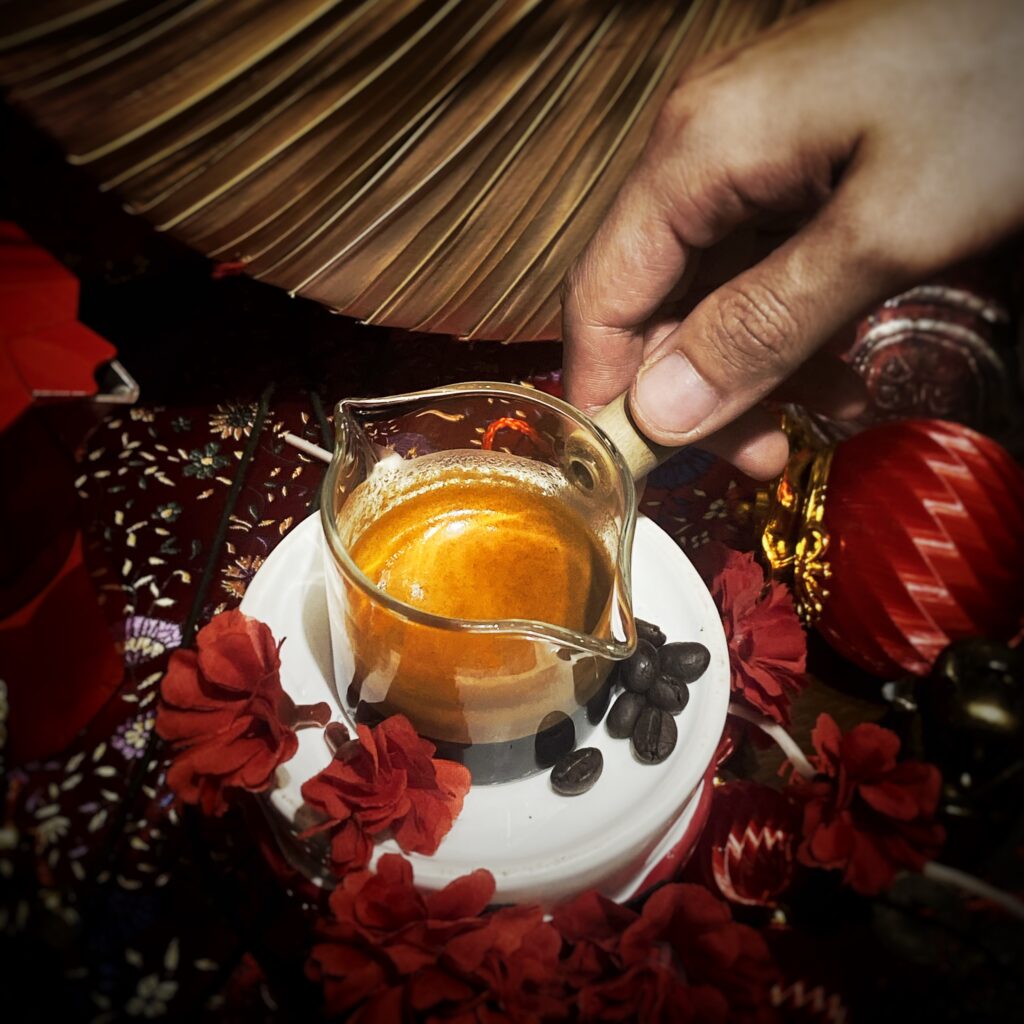Vietnamese coffee has long been dominated by Robusta beans, known for their strong flavor and high caffeine content, making them ideal for use in food manufacturing rather than for specialty coffee enjoyment. Despite this, Robusta beans boast a rich history deeply intertwined with Vietnamese culture and traditions.
History of Vietnamese coffee
The story of Vietnamese coffee traces back to the 19th century when French colonists introduced coffee plants to the fertile lands of Vietnam. Amidst the lush greenery of the Central Highlands, these coffee plants found a welcoming home, thriving in the cool climate and nutrient-rich volcanic soil. Initially cultivated on a small scale, coffee soon became a significant cash crop, with plantations sprawling across the highlands, transforming the region into a hub of coffee production. The introduction of coffee marked the beginning of a new chapter in Vietnam’s agricultural landscape, laying the groundwork for the country’s emergence as a major player in the global coffee market.
Vietnamese coffee history is deeply rooted in the cultivation of Robusta beans, which have thrived in the country’s unique climate and soil conditions for centuries. Unlike Arabica beans, which are prized for their nuanced flavors and grown at higher elevations, Robusta beans are renowned for their bold, full-bodied taste and resilience to pests and diseases. Vietnam’s favorable climate, characterized by hot and humid weather, coupled with its fertile soil, has made it an ideal environment for cultivating Robusta beans. This robust variety now accounts for the majority of coffee production in Vietnam, shaping the nation’s coffee culture and industry.
As Vietnam continues to emerge as a prominent player in the global coffee market, the legacy of Robusta beans remains integral to the country’s coffee heritage, paving the way for innovative approaches to coffee cultivation and consumption, exemplified by establishments like Tonkin Specialty Coffee.
Development of Vietnamese Coffee Industry
Throughout the 20th century, the Vietnamese coffee industry experienced periods of growth, transformation, and resilience. Following the end of French colonial rule and the Vietnam War, the government implemented policies to promote coffee cultivation as a means of economic development. These efforts bore fruit, leading to a rapid expansion of coffee production and exportation. Vietnam soon became one of the world’s largest producers of robusta coffee, with its beans prized for their bold flavor and high caffeine content. Today, coffee cultivation remains a cornerstone of the country’s economy, supporting millions of livelihoods and contributing significantly to Vietnam’s GDP.
Role of Coffee in Vietnamese Culture
In Vietnamese culture, coffee is more than just a beverage; it is a cherished tradition steeped in history and symbolism. Whether enjoyed in the bustling cafes of urban centers or the tranquil courtyards of rural villages, coffee serves as a catalyst for connection and conversation. Traditional Vietnamese coffee preparation methods, such as the use of the phin filter or the incorporation of condensed milk and sugar, reflect the ingenuity and resourcefulness of the Vietnamese people. Coffee has become an integral part of daily life, with rituals and customs surrounding its consumption enriching the social fabric of Vietnamese society.
Vietnamese Coffee during Colonial Rule
During the period of French colonial rule, coffee consumption in Vietnam underwent a transformation, as European-style cafes proliferated in urban centers such as Hanoi and Saigon. These cafes became social hubs where intellectuals, artists, and revolutionaries gathered to exchange ideas and engage in lively discourse. However, the benefits of the coffee industry were largely enjoyed by colonial elites, exacerbating existing socioeconomic disparities within Vietnamese society. Despite this, coffee culture continued to flourish, providing a space for expression and resistance against colonial oppression.
Coffee during the Vietnam War
The Vietnam War, which ravaged the country from 1955 to 1975, had a profound impact on all aspects of Vietnamese life, including coffee culture. Despite the challenges posed by wartime conditions, coffee remained a constant presence, offering solace and sustenance amidst the chaos of conflict. Instant coffee became a staple ration for troops on both sides, providing a quick and convenient source of energy in the midst of battle. Coffee served as a reminder of home and a source of comfort for soldiers far from their families, forging a sense of camaraderie and resilience amidst adversity.
Coffee Reemergence in Post-War Vietnam
In the aftermath of the Vietnam War, the country faced significant economic challenges, including widespread poverty and food shortages. However, the resilience of the Vietnamese people and the fertile lands of the Central Highlands played a crucial role in the revival of the coffee industry. With the support of government initiatives and international aid programs, coffee cultivation experienced a resurgence, laying the foundation for Vietnam’s ascent as a key player in the global coffee market. Smallholder farmers, often working family-owned plots of land, played a pivotal role in this resurgence, contributing to the democratization of the coffee industry and the empowerment of rural communities.
Global Recognition of Vietnamese Coffee
In recent decades, Vietnamese coffee has gained international acclaim for its unique flavor profile and distinctive brewing methods. Robusta beans, known for their bold and robust flavor, dominate the Vietnamese coffee market, offering a contrast to the more delicate arabica beans favored in other parts of the world. Traditional Vietnamese coffee preparation techniques, such as using the phin filter and incorporating condensed milk, have captured the imagination of coffee enthusiasts worldwide, sparking a global interest in Vietnamese coffee culture. Today, Vietnamese coffee can be found in cafes and homes across the globe, serving as a testament to the country’s rich coffee heritage.
Despite its success, the Vietnamese coffee industry faces a myriad of challenges, including climate change, fluctuating market prices, and competition from other coffee-producing nations. Climate change poses a particularly acute threat, with rising temperatures and unpredictable weather patterns affecting coffee yields and quality. Additionally, the reliance on robusta beans, which are generally lower in value compared to arabica beans, presents economic challenges for coffee farmers seeking to improve their livelihoods. However, amidst these challenges lie opportunities for innovation and adaptation, as stakeholders across the coffee value chain work together to build a more sustainable and resilient coffee industry.
Preservation of Coffee Heritage
As Vietnam continues to modernize and urbanize, the preservation of its coffee heritage becomes increasingly important. Efforts to safeguard traditional coffee cultivation practices and promote sustainable farming methods are essential for ensuring the longevity of the coffee industry and the livelihoods of coffee farmers. Additionally, initiatives to promote cultural exchange and appreciation of Vietnamese coffee traditions, both domestically and internationally, can help foster a greater sense of pride and awareness surrounding this cherished aspect of Vietnamese culture.

Nestled in the heart of Ho Chi Minh City, Tonkin Specialty Coffee is one of the best coffee shops to experience authentic Vietnamese flavors. From the iconic egg coffee and refreshing coconut coffee to bold Vietnamese coffee and the unique salt coffee, every sip is a journey into tradition. For non-coffee lovers, our Vietnamese matcha offers a gentle alternative. Pair your drink with a freshly baked banh mi or a buttery croissant, and savor the true taste of Vietnam in a setting inspired by folk culture and Indochine charm.


